Physics

Jul 11th, 2025 - The IceCube neutrino detector has allowed researchers to resolve a debate about what types of particles make up ultra-high-energy cosmic rays – but much remains unknown about these rare events We are zeroing in on the true composition of the rarest, highest-energy cosmic rays – which could help reveal their unknown origins. The universe is constantly showering us with bursts of particles , says Brian Clark at the University of Maryland. The most energetic among them, called ... [Read More]
Source: newscientist.com

Jul 10th, 2025 - Silicon has run almost every computer processor for six decades, but engineers recognize that shrinking silicon components is nearing its physical limits. Experts are exploring quantum materials , which could offer entirely new ways to process and store information beyond the capabilities of silicon. A new experiment shows that a single crystal of tantalum disulfide ( TaS2 ) can toggle from an electrical insulator to a metal in picoseconds. This could lead to the development of computers and ... [Read More]
Source: earth.com
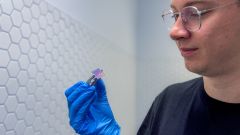
Jul 9th, 2025 - Quantum batteries may not be as well-known as other quantum machinery like quantum computing, but they could become a key part of future technologies. Now, researchers from Australia's RMIT University and national science agency CSIRO have shown that a new method can extend the lifetime of quantum batteries by 1,000 times compared to previous demonstrations. Quantum batteries are largely relegated to theory and lab experiments. These devices use quantum superposition and interactions between ... [Read More]
Source: cosmosmagazine.com

Jul 8th, 2025 - Cutting-Edge Physics and Chemistry Unfold One Quintillionth of a Second at a Time By & Just about anybody who played hide-and-seek as a kid remembers counting, with eyes (presumably) covered, in units of one-one-thousand. "One-one-thousand. Two-one-thousand. Three-one-thousand." It's one way to develop a feel for the duration of a second. If you live to be 80 years old, you will experience 2,522,880,000 seconds, not any one of which feels like a long time. When you think about time, it's ... [Read More]
Source: scientificamerican.com
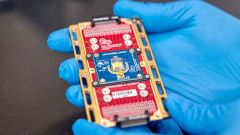
Jun 25th, 2025 - Scientists have developed a new type of computer chip that removes a major obstacle to practical quantum computers, making it possible for the first time to place millions of qubits and their control systems on the same device. The new control chip operates at cryogenic temperatures close to absolute zero (about minus 459.67 degrees Fahrenheit, or minus 273.15 degrees Celsius) and, crucially, can be placed close to qubits without disrupting their quantum state. "This result has been more than a ... [Read More]
Source: livescience.com
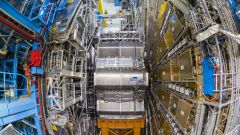
Jun 23rd, 2025 - New approach is already having an impact on the experiment's plans for future work. Measurements at the Large Hadron Collider have been stymied by one of the most central phenomena of the quantum world. But now, a young researcher has championed a new method to solve the problem using deep neural networks. The Large Hadron Collider is one of the biggest experiments in history, but it's also one of the hardest to interpret. Unlike seeing an image of a star in a telescope, saying anything at all ... [Read More]
Source: arstechnica.com
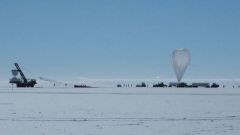
Jun 20th, 2025 - Sign up for CNN's Wonder Theory science newsletter. Explore the universe with news on fascinating discoveries, scientific advancements and more . Scientists are trying to solve a decade-long mystery by determining the identity of anomalous signals detected from below ice in Antarctica. The strange radio waves emerged during a search for another unusual phenomenon: high-energy cosmic particles known as neutrinos. Arriving at Earth from the far reaches of the cosmos, neutrinos are often called ... [Read More]
Source: cnn.com

Jun 19th, 2025 - The universe's invisible dark matter might swirl into spinning clumps laced with countless tiny vortices, new theoretical work suggests. The findings, published May 30 in the journal Physical Review D , offer a fresh perspective on the strange behavior of "ultralight" dark matter — a hypothetical substance made of extremely light elementary particles. In the new study, physicists explored what happens when a dark matter halo rotates — a natural expectation for real galaxies, which ... [Read More]
Source: livescience.com

Jun 18th, 2025 - Physicists have been searching for ways to link photons and local quantum bits in a single system. One approach that uses quantum dots is particularly appealing. By carefully steering atomic nuclear spins, researchers have found a way to store and retrieve quantum information without sacrificing stability or flexibility. Recent experiments with gallium arsenide quantum dots revealed a technique where 13,000 entangled nuclear spins cooperated to form a robust "dark state." This effort was led by ... [Read More]
Source: earth.com

Jun 15th, 2025 - Timekeepers once trusted wobbling pendulums and vibrating quartz. Now, the world's best quantum clocks probe energy gaps inside single atoms, counting oscillations with parts‑per‑quintillion precision. Professor Marcus Huber of the Atomic Institute at TU Wien and his collaborators have upended a rule that many physicists treated as gospel: double the accuracy, double the energy bill. Old clocks needed more energy Every clock marries a periodic event to a counter. The event ... [Read More]
Source: earth.com
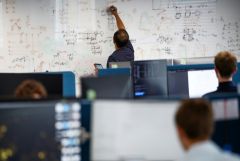
Jun 14th, 2025 - Quantinuum has made a number of important quantum computing advances over the past several years. The latest is solving some of the problems of knot theory. In a recent paper , scientists at the firm Quantinuum have announced the development of a practical quantum algorithm for solving a fundamental problem in a field of mathematics known as knot theory . Knot theory Knot theory is a field of mathematics called 'low-dimensional topology', with a history, stemming from an idea proposed by ... [Read More]
Source: digitaljournal.com
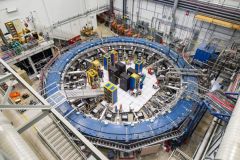
Jun 9th, 2025 - By The Standard Model of particle physics—the best, most thoroughly vetted description of reality scientists have ever devised—appears to have fended off yet another threat to its reign. At least, that's one interpretation of a long-awaited experimental result announced on June 3 by physicists at the Fermi National Accelerator Laboratory, or Fermilab, in Batavia, Ill. An alternative take would be that the result—the most precise measurement ever made of the magnetic wobble of ... [Read More]
Source: scientificamerican.com
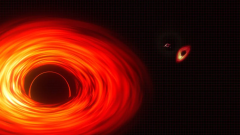
Jun 4th, 2025 - Scientists might be on the verge of cracking one of the biggest problems in physics, allowing them to finally create a grand Theory of Everything. Currently, two separate theories are used to explain different aspects of the Universe around us – quantum mechanics and gravity . Though many have attempted to bring the two together into a single idea, no one has yet managed to create a convincing theory. "Combining gravity and quantum theory into a unified framework is one of the central ... [Read More]
Source: sciencefocus.com
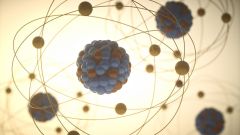
May 31st, 2025 - A mysterious second flavor of hydrogen atoms — one that doesn't interact with light — may exist, a new theoretical study proposes, and it could account for much of the universe's missing matter while also explaining a long-standing mystery in particle physics . The mystery, known as the neutron lifetime puzzle, revolves around two experimental methods whose results disagree on the average lifetime of free neutrons — those not bound within atomic nuclei — before they ... [Read More]
Source: livescience.com

May 27th, 2025 - Statistical mechanics is one of the pillars of modern physics. Ludwig Boltzmann (1844–1906) and Josiah Willard Gibbs (1839–1903) were its primary formulators. They both worked to establish a bridge between macroscopic physics, which is described by thermodynamics, and microscopic physics, which is based on the behavior of atoms and molecules. The Austrian physicist Boltzmann explained the second law of thermodynamics in statistical terms. He defined the entropy of a system based on ... [Read More]
Source: phys.org
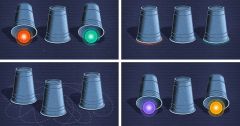
May 25th, 2025 - !DOCTYPE html> A new proposal makes the case that paraparticles—a new category of quantum particle—could be created in exotic materials. The original version of this story appeared in Quanta Magazine . On a quiet pandemic afternoon in 2021, Zhiyuan Wang , then a graduate student at Rice University, was alleviating his boredom by working on a weird mathematical problem. After he found an exotic solution, he started to wonder if the math could be interpreted physically. Eventually, he ... [Read More]
Source: wired.com